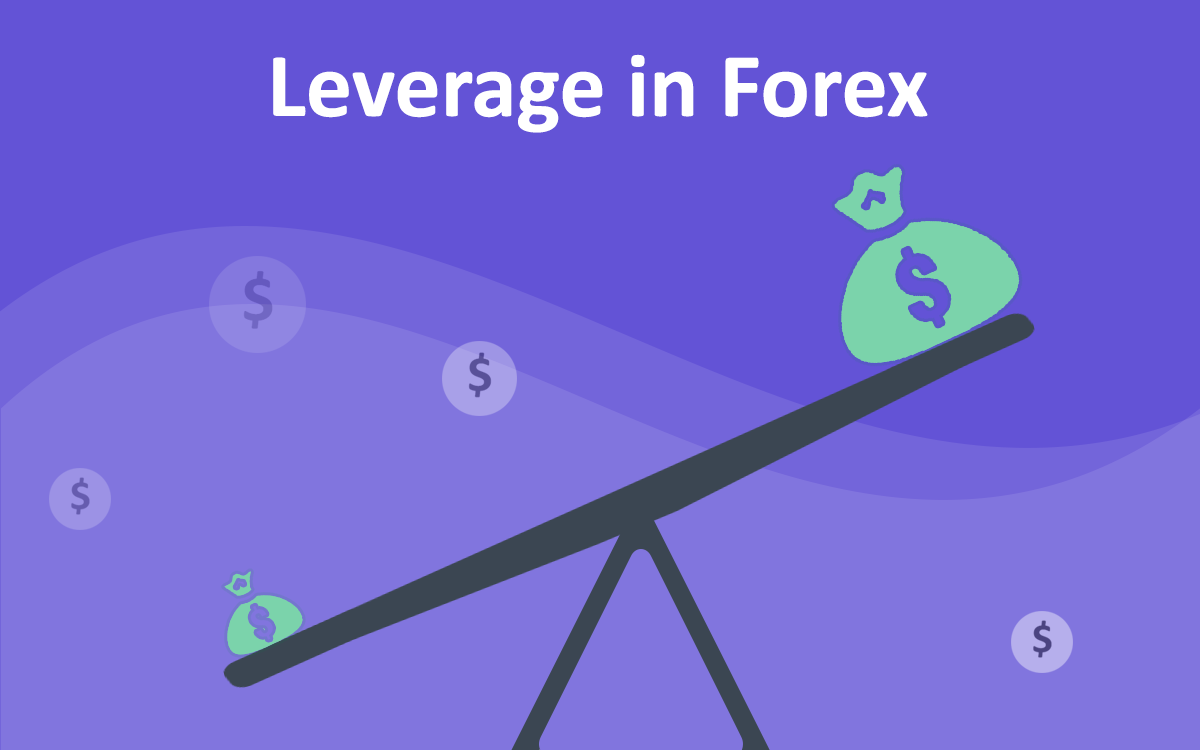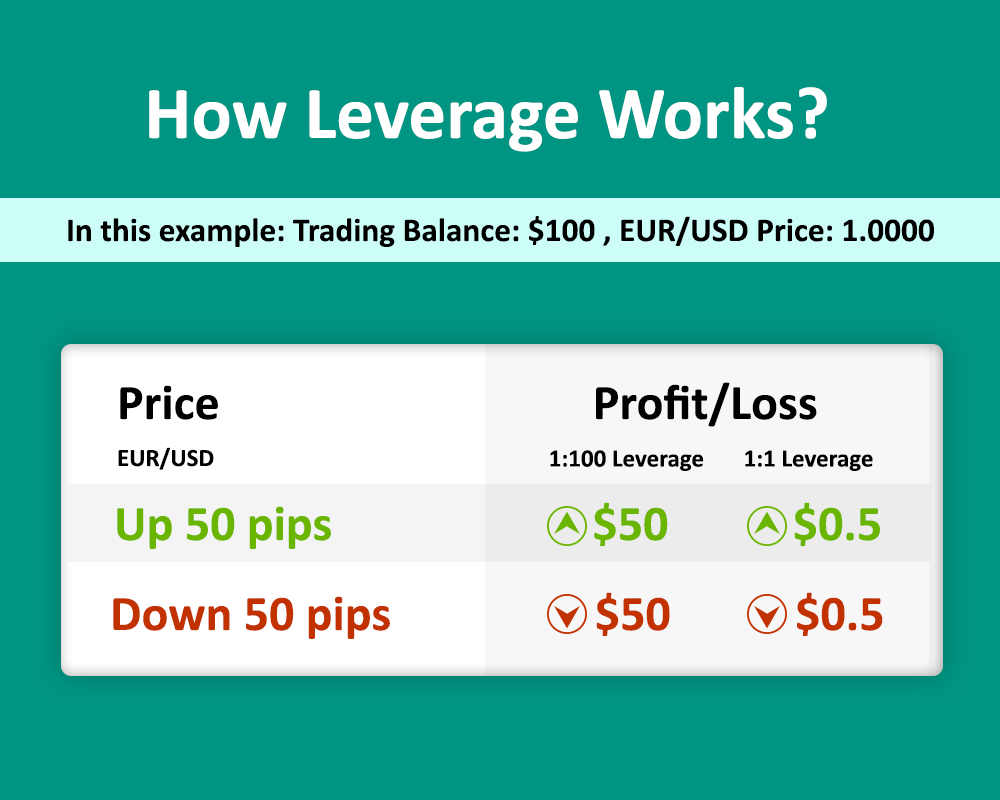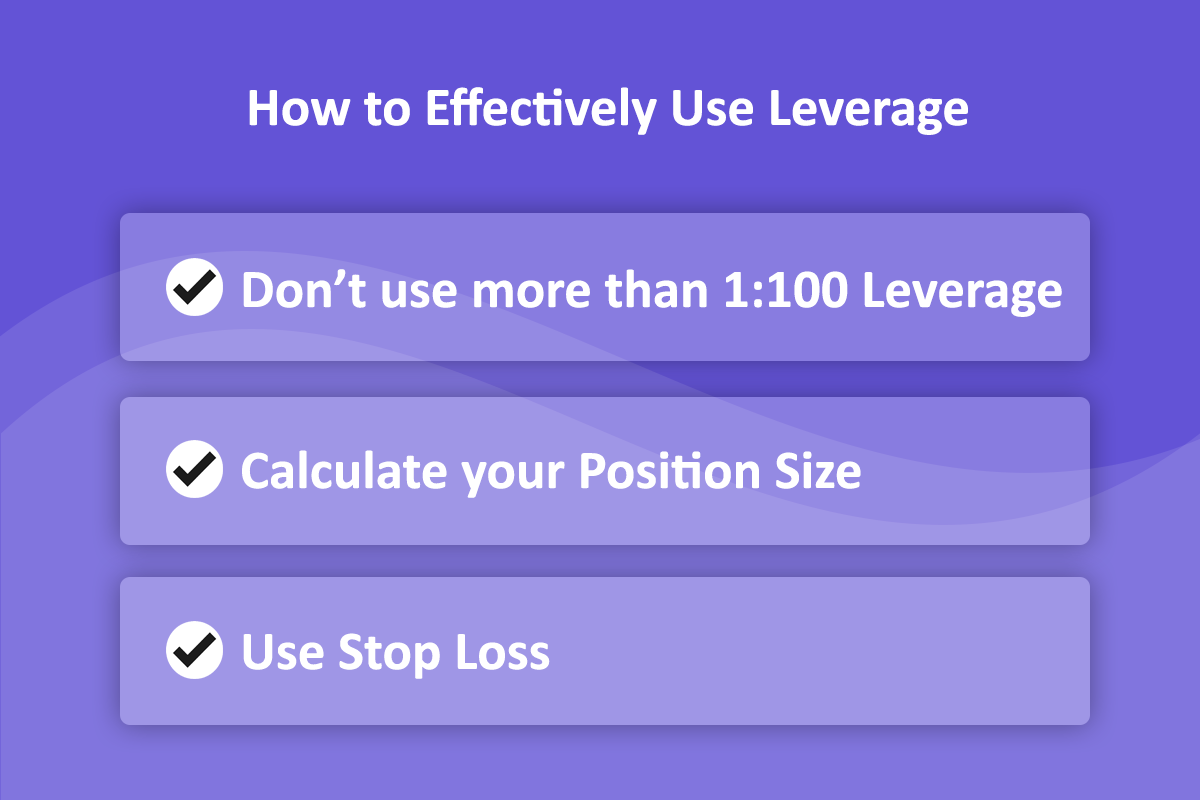The ability to use ‘leverage’ attracts so many traders to retail Forex Trading. But what exactly is it?
Many day traders use leverage to significantly increase their ROI (return on investment). To exploit leverage effectively, one must learn its basics, identify its risks and benefits.

You may feel quite enticed by the high returns you generate by using leverage, but always keep in mind that this approach has the potential to bring major losses as well.
Now before we dive into the ‘world of leverage’ in Forex, let’s understand the basic concept behind it first.
Leverage, a useful financial tool, allows traders to trade bigger chunks of money using the limited amount of trading capital. In simple terms, it means you can place a trade in the market with much smaller deposit than you would be able to via traditional investing.
Let’s take a realistic example of a trade on EUR/USD.
Assume you want to place a buy order on EUR/USD at 1.1200 market price. To place a buy order for 1 Standard Lot (100,000 units), you would need 112,000 USD trading capital to place the trade, if you are not using any leverage.
But let’s say that you are using 1:1000 leverage, then the calculation will go like this:
Capital/Margin Requirement = (1 X 112,000) / 1000 = $112 , i.e. the Margin Required = (No. of Lot(s) X Currency Price) / Leverage.
So, you will now be able to trade 1 Standard Lot with only $112 in your trading account.
Sounds powerful, right? But you should note that high leverage will not always go in your favor.
In the above example, with high leverage you can place order for more trading lots. But the large lot size also increases your risk, and may not bring you profit all the time. One bad trade can eat up all the equity in your account.
Leverage is commonly referred to as a double-edged sword, since it can bring both positive and negative outcomes for traders. It can be very dangerous if used improperly.
Brokers mostly offer very high leverage as high as 1:2000, but that does not mean you should use it on every trade.
It is indeed tempting to use maximum leverage on every trade to make quick profits, but the risks are just not worth it. In general, the less leverage you use, the safer it is for your trading capital.
Let’s take an example how leverage can go against you.

What will happen if the house prices increase by 10%? The revised price of the house is now $110k. Once you pay your loan amount $90k, you’re still left with $20k. This implies that the 10% rise in prices yielded 100% profit on your $10k investment.
Now, what is the scenario if the price of the house falls by 10%? You sell the house for $90k, pay off your loan amount $90k and are left with nothing! Similarly, a 10% fall in prices becomes a 100% loss for you. And if the house price falls by 20%, you’ll suffer a 200% loss.
It means you’ve not only lost your initial $10k but you also owe $10k, as the loan amount is $90k and the sale amount is $80k. When the investment of property drops 1/leverage ratio (1/10 or 10%), you seem to lose your money. With a 25:1 leverage ratio, you will lose all your money with only 1/25 or 4% fall in prices. If the fall percentage is more than 4%, you are in debt. This shows that the higher the leverage ratio, the more the risk.
One of the most unpleasant experience you might face as a trader is a margin call. This is when your broker sends.
In order to employ leverage, you need to have sufficient funds in your trading account to cover possible losses. A margin call happens when you no longer have any usable margin and your account needs more funding.
Suppose you are buying shares of Microsoft worth $10,000. You use $5000 of your own funds and borrow the remaining $5000 from your broker. Your broker keeps a maintenance margin of 25%. So, your equity is 50%.
Investor’s Equity (in percentage) = (Market Value of Assets – Borrowed Funds) / Market Value of Assets
Hence, it is 50% = ($10,000 – $5000) / ($10,000) which is clearly above the 25% maintenance margin. Now suppose on the next day of trading, the value of shares drops to $60,000.
Now, your equity will come down to 16.67% = ($6000 – $5000) / ($6000)
This is now below the maintenance margin of 25%. In this scenario, your broker will make a margin call and will ask you to deposit a certain amount of funds to meet the margin. To avoid margin calls, you should reduce your leverage, employ risk management strategies, keep a healthy amount of free margin in your account, and trade smaller sizes.
Most successful traders say that profitability in forex trading is determined by the amount of capital in a trading account & good money managements.
You would not want to lose your full account on a single trade, right?

1) Don’t use more than 1:100 Leverage:
Professional traders tend to use minimum leverage of not more than 1:100.
It means if you have $100 in your trading account balance, then it is advisable to only trade 1 Mini Lot (10,000 Units) at max. Here’s how the calculation goes:
Maximum trade size = Leverage x Account capital
You must use leverage at safe levels where a loss on a single trade would not erode your complete account balance. Also, it is best to utilize stop loss on all your trades.
2) Calculate your Position Size:
The position size of your trades can effectively manage your risk. It is one of the crucial aspects of risk management as it identifies the amount of account balance one is prepared to risk (or lose on worst case) with each trade.
Maximum Capital Risk ÷ Specific Trade Risk = Optimal Position Size
where the capital risk is account size x risk tolerance (commonly accepted tolerance range is 1-3%) and the specific trade risk is stop loss in pips x pip value.
Use the above procedure, let’s determine the optimal position size for a trade of Crude Oil (valued at $10 per pip), assuming a $10,000 account, 3% risk tolerance, and 15 pips stop loss:
Optimal position size = $10,000 × 0.03÷ 15 × $10 = 2
As per the above calculations, the position size for the crude oil trader is 2 contracts. Putting on trade with more than 2 contracts is excessive use of leverage.
3) Risk reward ratio:
Risk is the amount of money you may lose in a trade. With adequate risk and reward settings, it might be possible to reap consistent profits. Risk should always be determined in advance as a reward is simply multiplier of risk (1, 2 or 3 times).
For instance, in a trade, you set your stop loss at 10 pips and take profit at 20 pips, the risk-reward ratio is 10:20 or 1:2. This implies you are willing to risk 10 pips for the opportunity to gain 20 pips. This ratio depends on several factors including the type of trader, market conditions and more. It’s better if you can find trades that have low risk and high rewards.
We hope now you have understood the concept behind leverage and its various aspects. Always remember, no matter how tempting it may look, the lower the leverage, the better it is.
2021's Best FX Brokers
See Rank